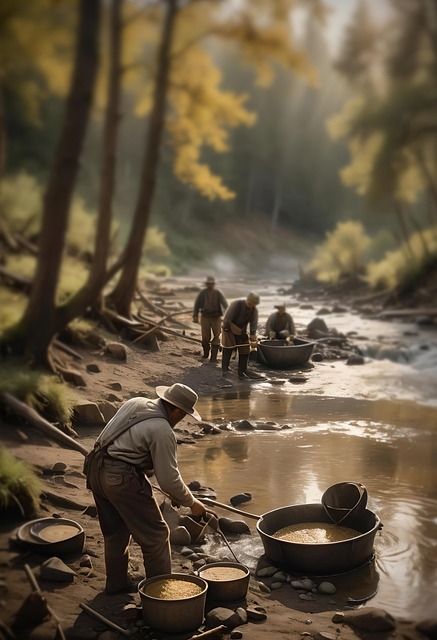In the mid-19th century, Lane County, Oregon, experienced a transformative Gold Rush that attracted international immigrants from Europe, China, and Mexico. This period left an indelible mark on the region's demographics, culture, and landscape, shaping its historical heritage through diverse communities, rich traditions, and lasting impacts still celebrated today via historic sites, museums, and festivals.
“Uncover the captivating story of Lane County, Oregon, during its gold rush era, a period that attracted diverse immigrants seeking fortune. This article explores the historical context, migration trends, and lasting cultural influences shaped by the region’s rich gold mining past. Delve into the demographic shifts as adventurers, prospectors, and newcomers flocked to Lane County, leaving an indelible mark on its modern identity. Discover how the gold rush era continues to resonate in the county’s vibrant tapestry.”
- The Historical Context of Lane County's Gold Rush Era
- Immigration Patterns and Demographics During the Gold Mining Boom
- Legacy and Impact on Lane County's Cultural Landscape Today
The Historical Context of Lane County's Gold Rush Era
In the mid-19th century, Lane County, Oregon, became a hub for excitement and adventure as news of rich gold deposits spread far and wide. This period marked the beginning of a significant immigration wave, drawing folks from diverse backgrounds to the untamed wilderness that was then Lane County. The year 1848, when gold was discovered in California, sparked a frenzy that inevitably reached the Pacific Northwest, including Oregon’s southern regions.
Gold mining in Lane County offered more than just the promise of fortune; it symbolized the spirit of exploration and the American Dream. Prospectors from various countries, enticed by tales of untapped riches, ventured into the county’s rugged terrain. This era left an indelible mark on the region’s history, shaping its demographics, culture, and landscape. The once-peaceful indigenous territories became a bustling metropolis of temporary settlements and mining camps, each with its own story to tell about the Lane County gold rush era.
Immigration Patterns and Demographics During the Gold Mining Boom
During the peak of the gold mining boom in Lane County, Oregon, a diverse array of immigrants flocked to the region drawn by the promise of wealth and opportunity. The demographic makeup of this influx was notable for its international diversity, with people from various European countries, China, and even Mexico seeking their fortune in the golden fields. This period witnessed an unprecedented surge in population as prospectors, many of them recent arrivals, established themselves in the county’s rapidly growing towns and settlements.
The immigration patterns reflected a global attraction to Lane County’s gold mining prospects, with well-established routes for potential immigrants from far and wide. The diverse backgrounds of these newcomers contributed to a vibrant yet challenging social landscape. As the gold rush gained momentum, so did the need for infrastructure and services, leading to the development of new communities and an increased demand for labor across industries supporting the mining sector in Lane County.
Legacy and Impact on Lane County's Cultural Landscape Today
The Gold Rush era in Lane County, Oregon, left an indelible mark on its cultural landscape, shaping its diversity and heritage. The influx of immigrants seeking their fortunes in gold mining brought a myriad of cultures and backgrounds to the region. These early settlers contributed to a rich tapestry of traditions, cuisines, and languages that continue to thrive today. Many communities within Lane County bear the names of these pioneer towns, serving as reminders of the era’s significance.
The legacy of gold mining can still be seen in the county’s historic sites, museums, and annual festivals. Local cultural centers often showcase exhibits detailing the experiences of those who arrived during this period, preserving their stories for future generations. The diverse population that settled in Lane County because of gold mining has contributed to a vibrant and dynamic community, making it a unique place where the past meets the present.
